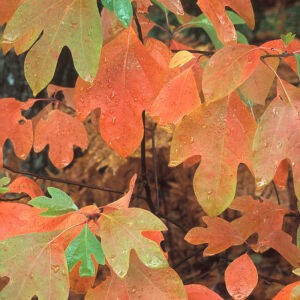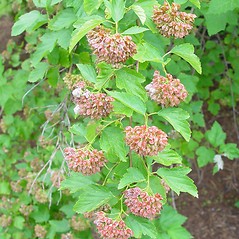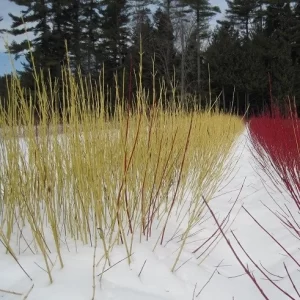 Out of stock
Out of stock Ninebark (Physocarpus opulifolius)
$25 for 5
Physocarpus opulifolius, commonly called ninebark, is an upright, spreading, somewhat coarse, deciduous, shrub closely related to the genus Spiraea. Typically occurs along streams, rocky banks, gravel bars and in moist thickets. Grows 5-9’ tall. Noted for its exfoliating bark (on mature branches) which peels in strips to reveal several layers of reddish to light brown inner bark . Bark provides winter interest, but is usually hidden by the foliage during the growing season. Features small pink or white, five-petaled flowers appearing in dense, flat, rounded, 1-2” diameter, spirea-like clusters (corymbs) in late spring. Flowers give way to drooping clusters of reddish fruit (inflated seed capsules). Ovate to rounded, usually 3-5 lobed leaves (to 4” long) are dull green in summer changing to an undistinguished yellow in fall.
Easily grown in average, slightly acidic, dry to medium moisture, well-drained soil in full sun to part shade. Tolerates a wide range of soil conditions. Prune as needed immediately after bloom and no later than mid-August. Plants may be cut close to the ground in early spring to rejuvenate.
Ninebark is an excellent plant to promote wildlife. The flowers are a good source of nectar and visited by a wide variety of insects, among them flies, beetles, butterflies, moths, bees, and wasps. The foliage provides food for several species of aphids, beetles, plant bugs, and caterpillars of various moths. Also, it is occasionally browsed by deer. The seeds might attract birds.
Use in shrub borders, as a hedge, screen or for erosion control on banks. Able to grow in harsh conditions.
Five 12-18″ bare root plants for $25
Image credit: Arthur Haines via GoBotany/Native Plant Trust
In stock



